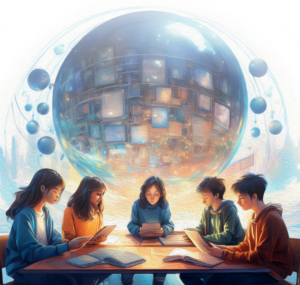AI can be a powerful tool for helping people and improving the world. When used correctly, AI can assist doctors in diagnosing diseases faster, predict natural disasters to keep communities safe, and even help protect the environment by reducing pollution. These are examples of “AI for the public good”—AI that positively and meaningfully benefits society.
However, it’s essential to validate these examples and make sure AI is truly helping. Just because an AI system claims to do good doesn’t mean it always does. We must check if the AI is fair, accurate, and safe. By carefully evaluating its impact, we can ensure that AI is used wisely to create a better future for everyone!
There is an ever-expanding variety of artificial intelligence systems, ranging from natural language processing models, such as chatbots, which allow users to engage in casual conversations and conduct in-depth research, to advanced computer vision systems capable of diagnosing diseases, identifying objects for robotics, and enabling self-driving cars to navigate complex environments. AI also powers recommendation engines, financial forecasting tools, and creative applications like music and art generation, continuously transforming industries and daily life.
AI is not limited to a single field—it thrives in interdisciplinary subjects, combining areas like math, science, art, and history to create new possibilities. Here are some fascinating examples:
Science and Art:
AI can transform hidden space data, such as radio waves, into stunning visual representations. By applying colors inspired by nature, it reveals the beauty of the cosmos in ways the human eye cannot see.
Math and Music:
AI leverages mathematical patterns to compose music, generating harmonies, beats, and melodies that can evoke emotions, from joy to relaxation.
History and Language:
AI helps uncover lost stories and translate ancient texts, making historical knowledge more accessible. It bridges the past and present, preserving cultural heritage.
This blending of disciplines is known as interdisciplinary innovation, and AI continues to push the boundaries of what is possible.
It’s important to be open minded when using AI. Being open-minded means being curious and willing to try new ideas. When we learn about AI, we ask questions and share different opinions, which helps us better understand it.
By using all these subjects and staying open to new ideas, we can build more better AI systems.
However, while technology brings convenience and efficiency, it can also raise ethical concerns.
This guide examines a few examples of ethical conflicts and practical cases related to AI, and presents methods that students can directly apply in school and daily life. We aim to answer the question: “How can we benefit from AI technology without causing harm to
ourselves and others?”
